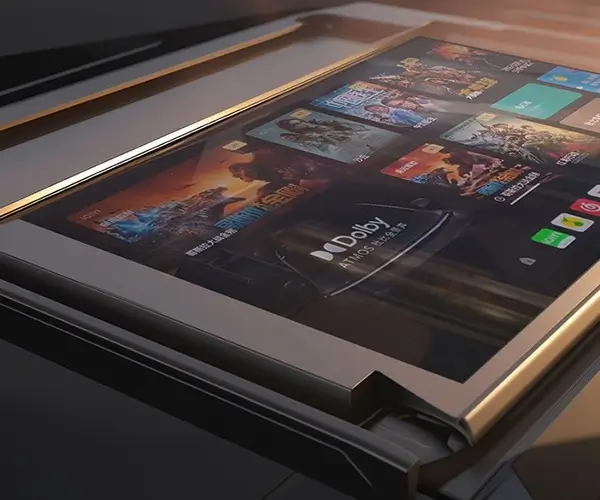Imagine a world where simple components transform into astonishing creations—robots that dance, cameras that follow you, or automated doors that open at your command. The magic behind these innovations often lies in a tiny but mighty component called the servo motor. Its ability to precisely control angular position makes it an essential building block in robotics, automation, and even artistic installations.

If you’re new to Arduino, a tiny yet powerful microcontroller platform beloved by hobbyists and engineers alike, mastering servo motors becomes a gateway to endless inventive possibilities. This guide aims to introduce you to the fundamental concepts, showcase how to control a servo with code, and inspire you to experiment beyond the basics.
What is an Arduino and Why Use It?
At its core, Arduino is an open-source electronics platform based on easy-to-use hardware and software. Think of it as a digital playground where you can craft everything from simple blinking lights to complex robotic arms. Its simplicity and affordability make it a favorite among students, hobbyists, educators, and professionals.
Arduino boards come in various models—for beginners, the Arduino Uno is often the most accessible. It features digital pins, analog inputs, and USB connectivity, allowing you to connect sensors, LEDs, motors, and more. The intuitive Arduino IDE (Integrated Development Environment) makes programming straightforward with a C/C++ based language tailored for easy hardware control.
What Is a Servo Motor?
A servo motor is a compact rotary actuator that offers precise angular positioning. Unlike regular motors that run continuously, servos are designed to rotate to a specific position within a defined range, typically 0 to 180 degrees. They contain a built-in control circuit and a feedback mechanism, allowing them to move to and stay at designated angles with remarkable accuracy.
Servos are perfect for applications like robotic arms, steering mechanisms in remote-controlled cars, pan-and-tilt camera mounts, or even musical instruments. Their ease of control makes them ideal entries into the world of automation.
Components Needed for Arduino-based Servo Projects
Before diving into coding, gather your essentials:
Arduino Board: Arduino Uno, Nano, or similar. Servo Motor: Standard hobby servo such as the SG90 or MG996R. Power Supply: Usually 5V power supply (many servos can be powered directly from Arduino’s 5V pin, but high-torque servos may need an external power supply). Connecting Wires: Jumper wires for connections. Breadboard: Optional but helpful for prototyping.
Wiring Your Servo to Arduino
Connecting a servo is straightforward:
Power (Red wire): Connect to 5V on Arduino (or external power if needed). Ground (Black or Brown wire): Connect to GND on Arduino. Signal (Yellow or White wire): Connect to a PWM-enabled digital pin on Arduino (e.g., pin 9).
Make sure your power supply can handle the servo’s current demands, especially if using multiple servos or high-torque models.
If you’re itching to control your servo with just a few lines of code, you're in the right place. Let’s get into the core Arduino commands that make servo motor control easy and intuitive.
Programming the Servo Motor with Arduino Code
The Arduino IDE provides a built-in library called Servo that simplifies controlling servo motors. To include it, simply add the following line at the top of your sketch:
#include
Once included, creating a servo object and attaching it to a pin is as straightforward as creating a variable:
Servo myServo;
In the setup() function, attach the servo to a specific pin:
myServo.attach(9); // attach servo to digital pin 9
To move the servo, you can use the write() method to specify an angle:
myServo.write(90); // move servo to 90 degrees
And to create a simple sweeping motion, you might use a loop:
for (int pos = 0; pos <= 180; pos += 1) { // goes from 0 to 180 degrees myServo.write(pos); delay(15); // waits 15ms for the servo to reach the position } for (int pos = 180; pos >= 0; pos -= 1) { // back to 0 degrees myServo.write(pos); delay(15); }
These snippets serve as the foundation, enabling you to orchestrate movements, gestures, or automated adjustments in your project.
Understanding Servo Control: PWM and Feedback
The core of servo control relies on PWM (Pulse Width Modulation). In essence, the duration of the pulse within a fixed period dictates the servo’s position. The Servo library abstracts this complexity, letting you specify angles directly.
Servos typically respond to pulses between 1ms (0 degrees) and 2ms (180 degrees) within a 20ms cycle. The library handles these details internally, allowing you to think in terms of angles rather than pulse widths.
Practical Example: Basic Arduino Servo Control Sketch
Here's a simple example sketch that moves a servo back and forth between two angles:
#include Servo myServo; void setup() { myServo.attach(9); } void loop() { myServo.write(0); delay(1000); myServo.write(180); delay(1000); }
This code positions the servo at 0 degrees, waits for a second, then moves it to 180 degrees, and repeats endlessly. It's a perfect starting point to see your servo in action.
Kpower has delivered professional drive system solutions to over 500 enterprise clients globally with products covering various fields such as Smart Home Systems, Automatic Electronics, Robotics, Precision Agriculture, Drones, and Industrial Automation.




































